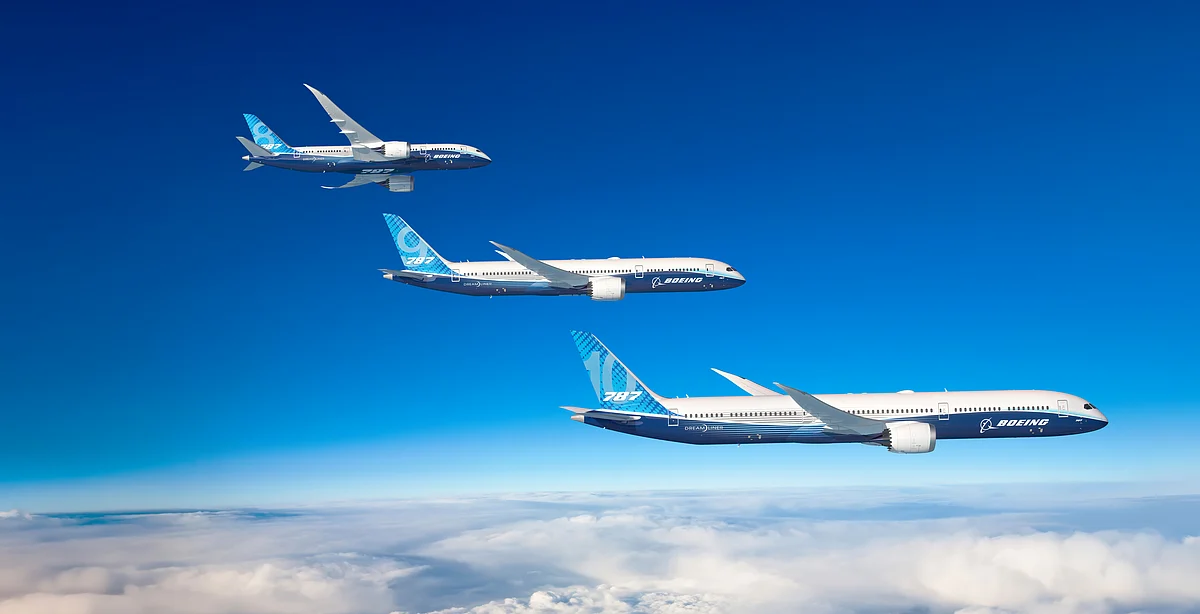Air India plane crash in Ahmedabad: What we know about the Boeing 787 Dreamliner
Used in long-haul travel, aircraft combines cutting-edge tech with passenger comforts

The Boeing 787 Dreamliner, often hailed as one of the most advanced passenger aircraft in the world, is now at the centre of attention following the recent crash of Air India Flight AI-171 in Ahmedabad. The aircraft, a Boeing 787-8 model bound for London, represents a major innovation in long-haul travel, combining cutting-edge technology with modern passenger comforts.
What makes the 787 Dreamliner unique?
Since its introduction in 2011, the Boeing 787 Dreamliner has been considered a milestone in aviation technology. Its design focuses on fuel efficiency, passenger experience, and advanced aerodynamics.
Key Features:
Composite materials:
Approximately 50% of the Dreamliner’s structure is made from carbon-fibre-reinforced plastic. This makes it lighter and more resistant to corrosion compared to traditional aluminum-bodied aircraft.
Fuel efficiency:
The Dreamliner uses about 20-25% less fuel than similar-sized older aircraft, making it a preferred choice for long-haul routes worldwide.
Enhanced passenger comfort:
The aircraft features larger windows with electronic dimming, improved cabin pressure, and better humidity levels, reducing passenger fatigue during long flights. The 787-8 can seat 248 passengers in a two-class configuration.
Advanced engines:
Powered by either Rolls-Royce Trent 1000 or General Electric GEnx engines, the Dreamliner is known for quieter operations and lower emissions.
Cost:
The Boeing 787-8 variant is priced at approximately $239 to $250 million per unit at list price, though actual sales prices can vary based on airline contracts and bulk deals.
Safety framework of the Boeing 787
The Boeing 787 incorporates multiple advanced safety systems:
Layers of backups:
From flight controls to electrical systems, the aircraft is designed with multiple layers of backups to ensure operational safety.
Fire protection systems:
Following early concerns related to its lithium-ion batteries in 2013, Boeing redesigned the battery containment systems. Since then, the aircraft has operated under enhanced regulatory scrutiny to ensure safety compliance.
Advanced cockpit and avionics:
The 787’s cockpit features digital displays, fly-by-wire technology, and automated alerts to assist pilots in monitoring aircraft systems.
Air India AI-171 Incident: What we know so far
Air India Flight AI-171, a scheduled service from Ahmedabad to London, crashed shortly after takeoff. Rescue and recovery operations were promptly initiated, and aviation authorities, including India’s Directorate General of Civil Aviation (DGCA), have begun a formal investigation.
At this stage, no official cause has been identified, and both Boeing and Air India have pledged full cooperation with investigative agencies.
Past safety performance of the Boeing 787
Globally, the Boeing 787 has a strong safety record, with thousands of successful commercial flights over more than a decade of service. There have been no major design-related fatal crashes involving the 787 prior to this incident.
Boeing’s response
Boeing has expressed its condolences regarding the AI-171 tragedy and reaffirmed its commitment to supporting the investigation. The company emphasised that the safety of passengers and crew remains its highest priority.
Sign up for the Daily Briefing
Get the latest news and updates straight to your inbox
Network Links
GN StoreDownload our app
© Al Nisr Publishing LLC 2026. All rights reserved.